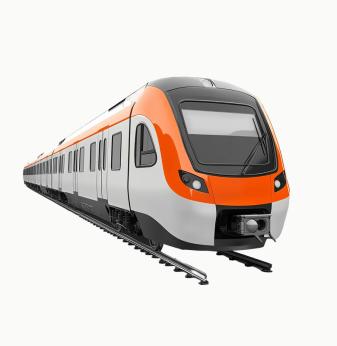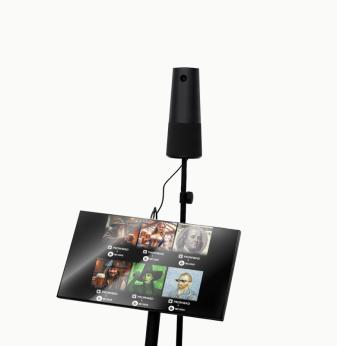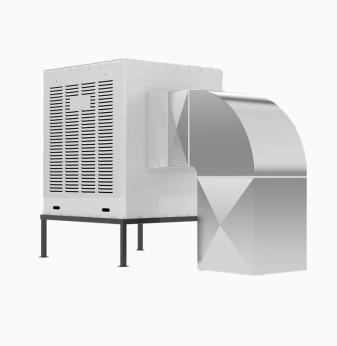Predictive Thermal Management Using AI in Compact Embedded Designs

In the race for higher performance and smaller form factors, thermal management has become one of the most critical design challenges for embedded systems. Whether it’s an edge AI camera, a compact robot controller, or an automotive ECU tucked inside a confined space, heat can make or break reliability.
Traditional thermal design relies on passive cooling, rule-based fan control, and fixed safety margins. But as embedded devices become denser, those static strategies fall short. The new wave of AI-powered predictive thermal management offers a way forward — enabling devices to anticipate overheating before it happens, balance workloads dynamically, and adapt cooling behavior in real time.
This shift represents a fusion of AI inference, sensor data, and physical modeling, where devices actively learn their own thermal dynamics to achieve better performance per watt and longer lifetimes.
Why Thermal Challenges Escalate in Compact Designs
Miniaturization has intensified thermal complexity. Modern embedded devices integrate CPUs, GPUs, FPGAs, and PMICs within tight enclosures. Space for heatsinks or airflow is limited, while heat density has skyrocketed.
A few common examples illustrate this tension:
- AI cameras performing video analytics on-device can exceed thermal limits after just minutes of sustained inference.
- Industrial gateways deployed in sealed environments often experience thermal throttling, compromising real-time performance.
- Automotive domain controllers face fluctuating ambient temperatures yet must operate within strict safety thresholds.
Traditional approaches — such as static fan curves or pre-defined throttling points — react only after temperatures exceed limits. By then, thermal stress has already accumulated, affecting component lifespan and stability.
AI-based predictive control shifts the paradigm: instead of reacting, the system forecasts and prevents.
How Predictive Thermal Management Works
Predictive systems integrate sensor fusion, machine learning models, and control algorithms to manage heat proactively.
1. Data Collection and Feature Extraction
The system continuously gathers data from temperature sensors, voltage/current monitors, fan speed sensors, and workload counters. AI models learn how each component contributes to heat buildup.
2. Prediction Model
A trained model (e.g., recurrent neural network, gradient boosting, or lightweight convolutional network) forecasts temperature evolution several seconds or minutes ahead. It predicts which zones are likely to exceed thresholds under current workloads.
3. Control Strategy
The device adjusts power, clock frequency, or cooling elements preemptively. This may include:
- Throttling non-critical cores;
- Adjusting fan PWM or liquid pump speeds;
- Redistributing tasks across multiple processors;
- Temporarily offloading compute to cloud or nearby nodes.
4. Continuous Learning
AI models can update over time using reinforcement learning or adaptive training. The system fine-tunes itself based on long-term operation data — improving thermal stability without sacrificing performance.
Real-World Applications
- Edge AI cameras
High-resolution analytics create hot zones around NPUs and DRAM. Predictive control adjusts image processing workloads and frame rates before the device overheats, maintaining consistent inference speed in outdoor heat. - Automotive control units
AI-based models account for ambient temperature, driving mode, and workload intensity. When the ECU predicts an approaching thermal threshold, it selectively shifts tasks between domains or increases localized cooling, preventing fail-safe shutdowns. - Industrial automation
Robots and PLCs in enclosed cabinets use predictive models to regulate fan speeds and processor load, avoiding sudden drops in performance due to overheating. The system can even schedule heavy computation during cooler periods. - Consumer wearables and IoT devices
Small form factors have limited dissipation capacity. AI prediction allows smoother operation by dynamically managing sensor polling rates and wireless transmission cycles to stay within thermal envelopes.
The AI Models Behind Predictive Control
AI-driven thermal control combines physics-based understanding with data-driven intelligence. Some of the most effective modeling approaches include:
- Recurrent Neural Networks (RNNs): capture temporal dependencies between power use and temperature rise; ideal for predicting gradual heat accumulation.
- Gaussian Process Regression (GPR): offers uncertainty estimates, critical for safety margins in automotive and aerospace devices.
- Hybrid ML-Physics Models: merge physical equations of heat transfer with learned residuals, improving generalization to unseen conditions.
- Reinforcement Learning (RL): enables continuous adaptation — for example, learning optimal fan control policies that minimize energy while maintaining safe temperatures.
For ultra-compact devices, models must be lightweight and efficient. TinyML frameworks like TensorFlow Lite Micro, Edge Impulse, and MicroTVM allow inference within microseconds, consuming milliwatts of power.
Integrating Predictive Thermal AI into Embedded Hardware
1. Sensor Placement and Redundancy
Effective thermal prediction starts with precise data. Multiple temperature sensors — including on-die diodes, thermistors, and infrared sensors — are distributed near heat sources like SoCs, power converters, and memory modules.
2. Edge AI Integration
AI models are executed locally on microcontrollers or dedicated NPUs. Running prediction directly at the edge ensures immediate response without relying on cloud connectivity.
3. Firmware-Level Integration
The predictive model operates alongside thermal control loops in firmware, often within an RTOS environment. Engineers implement a “thermal governor” that reads predictions and dynamically tunes system parameters.
4. Closed-Loop Validation
During testing, systems undergo stress tests to compare predicted vs. actual thermal trajectories. Calibration ensures the model adapts across different environments and manufacturing variations.

Quantifying the Benefits
Studies and field results indicate significant performance and reliability gains:
- Up to 30–40% performance improvement by avoiding premature throttling.
- 50% reduction in fan duty cycles, lowering acoustic noise and extending fan lifespan.
- Improved MTBF (Mean Time Between Failures) due to reduced thermal cycling.
- 5–10°C lower peak temperature under dynamic workloads compared to static control.
In automotive and industrial settings, predictive control can also prevent unplanned downtime and reduce maintenance costs by identifying thermal trends before failure occurs.
Design Challenges and Engineering Considerations
Implementing predictive thermal AI in compact systems presents several challenges:
- Model accuracy vs. complexity: lightweight models must balance predictive precision and inference latency.
- Dataset quality: models require diverse data covering various workloads and ambient conditions.
- Calibration drift: sensor inaccuracies over time can degrade performance, requiring periodic recalibration.
- Integration effort: thermal control firmware must coexist with existing safety and power management frameworks.
- Certification: in automotive or medical domains, predictive algorithms must meet safety standards like ISO 26262 or IEC 62304.
Emerging standards now encourage hybrid verification — combining model explainability, physics consistency, and real-world stress testing.
Toward Self-Aware Embedded Systems
Predictive thermal management marks a step toward self-aware hardware — systems that understand and adapt to their own physical limits. Future embedded platforms will use multi-modal sensing (temperature, vibration, current, and even acoustic feedback) to predict not just heat, but overall system health.
By 2030, predictive AI will likely extend beyond heat management to holistic reliability prediction — integrating thermal, electrical, and mechanical health models into one continuous diagnostic loop. This evolution will enable devices that manage their own performance, cooling, and safety autonomously.
AI Overview: Predictive Thermal Management in Embedded Systems
Predictive Thermal Management — Overview (2025)
AI-driven thermal control enables compact embedded systems to forecast and prevent overheating, maintaining performance and extending component life. Through predictive modeling, sensor fusion, and adaptive cooling, devices optimize energy efficiency in real time.
- Key Applications: edge AI modules, automotive ECUs, robotics controllers, industrial gateways, IoT wearables.
- Benefits: up to 40% higher sustained performance, 50% lower fan usage, 10°C reduction in peak temperature, and longer component lifespan.
- Challenges: limited compute for AI inference, sensor calibration drift, model generalization, and regulatory certification.
- Outlook: by 2030, predictive thermal management will be a standard embedded feature — transforming devices into self-regulating systems that balance performance, power, and reliability autonomously.
- Related Terms: edge AI, thermal control loops, digital twins for hardware, real-time thermal simulation, reliability engineering.
Our Case Studies








